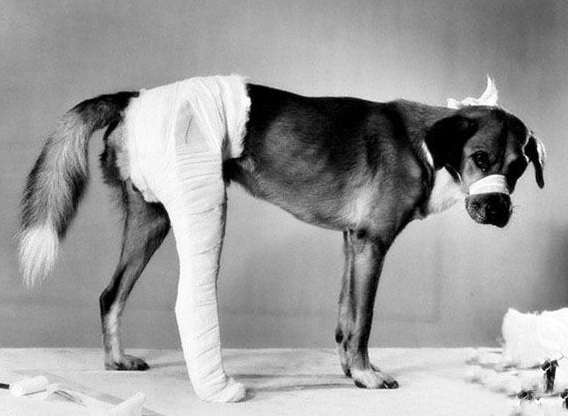
2022-09-09 3738
Small animals such as dogs and cats are prone to fractures, such as falling, crushing by heavy objects, being hit, running, twisting and flashing when jumping, etc., which may cause fractures. And healing after fractures is critical to the health of animals. So can a veterinary physiotherapy laser help an animal's fracture heal? The answer is absolutely yes.
Bone Morphogenetic Protein (BMP)
Bone morphogenetic proteins (BMPs) are critical for fracture healing. Bone morphogenetic proteins (BMPs), also known as bone morphogenetic proteins, are a group of highly conserved functional proteins with similar structures and belong to the transforming growth factor-β (TGF-β) family. BMP can stimulate DNA synthesis and cell replication, thereby promoting the directed differentiation of mesenchymal cells into osteoblasts. It is a major factor in inducing bone and cartilage formation in vivo, and is expressed in limb growth, endochondral ossification, early fracture, and cartilage repair, and plays an important role in bone embryonic development and regeneration.
The Role of Laser Therapy
l Many experiments and literatures have demonstrated that laser physiotherapy can increase bone mineralization. By stimulating the activity of bone morphogenetic proteins (BMPs), it modulates osteoblast activity and secretes more collagen matrix, so laser physiotherapy can help fractures and osteotomies heal faster and produce better tissue.
l Laser physiotherapy can affect growth factor release, vascularization, osteogenic activity, and inflammation. Research and experience have demonstrated that preservation of soft tissue and blood supply is important to fracture biology, and laser physiotherapy contributes to this.
l Laser physiotherapy also has anti-inflammatory and analgesic effects, which is why laser physiotherapy can improve fracture repair and patients' quality of life.
Other Application Areas
The application range of laser physiotherapy in orthopedic diseases is not only fractures, but the following orthopedic diseases can also use laser therapy:
l Osteotomy: Laser physiotherapy can improve bone graft survival. Animal models show that laser physiotherapy improves graft-host bonding, filling of osteocyte cavities, and collagen deposition, while reducing early postoperative inflammatory infiltration.
l Osteomyelitis: Laser therapy can boost blood circulation and metabolism, which can help with osteomyelitis. Because ischemia is both a predisposing factor and a consequence of osteomyelitis. In a study evaluating the effect of different doses of laser in the treatment of chronic osteomyelitis of the tibia in rats, 45 rats were tested. Trial results showed that laser physiotherapy was effective in reducing infection levels, so the authors concluded that laser therapy could be an adjunct to the treatment of osteomyelitis.
l Cartilage damage: Another study evaluated the effect of laser therapy on cartilage damage in the knee joint in rabbits. Forty-nine rabbits participated in the experiment, all left-sided lesions were treated with laser, and the right knee was not treated as a control group. After 24 weeks, histomorphological examination of the knee joints was performed. The morphological characteristics of condylar cells and the repair effect of osteochondral tissue after laser treatment were better.